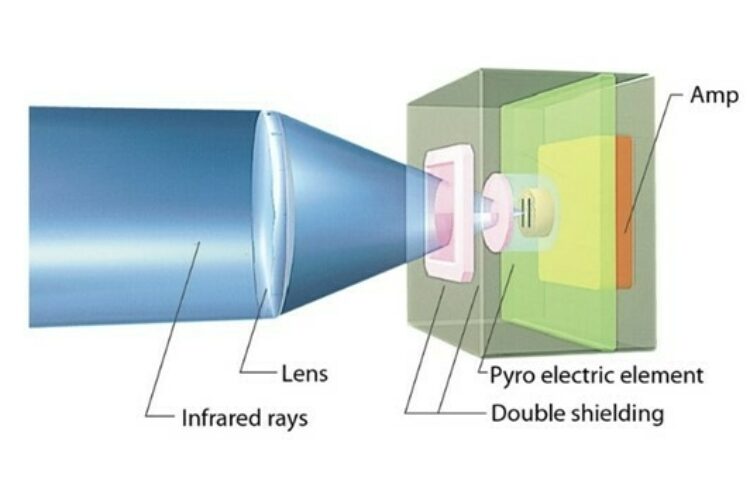29 June 2023 - Technical Team
Featured in: Product information and OPTEX tech tips, Tech Tip, Intrusion detection
When it comes to protecting more challenging environments, most installers choose to utilise dual-technology sensors. These sensors possess the strength to keep a stable performance and can handle conditions such as strong sunlight and air currents, while still being capable of detecting small movements. However, there are certain locations where dual-technology sensors are not necessary and situations where single technology sensors (PIR) perform best.

DUAL-TECHNOLOGY SENSORS
Dual-technology sensors typically include a combination of PIR and micro-wave technologies. An alarm is only raised when both technologies simultaneously detect. The purpose of this approach is to ensure that each sensor compensates for the weaknesses of the other, thereby eliminating false alarms. The effectiveness of dual-technology sensors depends on the characteristics of each sensing technology.

Passive Infrared (PIR) elements measure changes in infrared energy levels between detection zones within a specific time and at a particular speed. Very few environmental disturbances mimic this specific pattern of activity. However, PIR sensors face challenges in the presence of heat sources, especially warm air currents. It is important to note that PIR sensors receive extremely feeble signals of reflected infrared energy through their pyro elements. Due to the low signal level, precise engineering of amplification and filtration processes is required to obtain high-quality signals. However, this necessary processing slows down response times and limits the coverage area.
Microwaves function differently. They emit a signal that covers an area and then detect variations between the transmitted signal and the reflected one, known as the Doppler shift. Microwave sensor technologies offer strong detection performance, capable of detecting almost any movement.
SINGLE TECHNOLOGY SENSORS
Even if it looks like having dual-technology sensors represents an upgrade in the security system, it isn’t always necessary or the best solution. In every case, it’s essential to evaluate the specific characteristic of the type of installation and of the sensor. Some of the challenges commonly faced by PIR sensors have been addressed by OPTEX developing digital sensors and unique algorithms to ensure reliable detection and best-performance.

Digital logic
OPTEX's patented Super Multidimensional Analysis (SMDA) logic provides the detector with sensing analytics to recognise what has been detected. By analysing the PIR signals and environmental information, our detectors can differentiate between genuine intrusions and a number of nuisance alarms, such as changes in weather conditions or swaying vegetation. Our sensors also have a size analysis logic, which means small animals can be ignored.

Double conductive shielding
Our double conductive shielding significantly reduces false alarms caused by external interference. By utilising two layers of conductive material, the shielding effectively blocks electromagnetic (EMI) and radio frequency interference (RFI), ensuring reliable and accurate detection performance.

Extreme high detection mode
As PIR detection relies on the difference of temperature between the moving object and the ambient temperature, in warmer climates it’s important that the small difference is also detected. For those regional locations, the sensitivity can be set to extremely high, maximising the detection performance and avoiding missed alarms.
CONCLUSION
Ultimately, there is no one-size-fits-all; the decision between single technology sensors and dual-technology sensors depends on the specific needs, budget, and environmental factors. Assess the level of accuracy required, potential false alarm sources, installation complexity, coverage area, power considerations, and weigh them against the benefits of each sensor type to make the right choice for you.